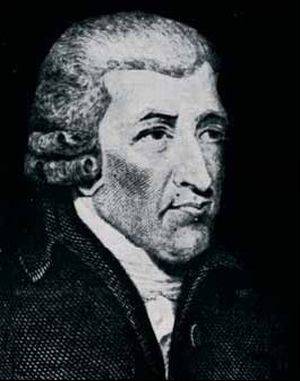John Walker - Inventor of the Friction Match
The modern history of matches goes back to the early 19th century England, where one chemist saw the significance of self-igniting substances and managed to create first version of items that would soon manage to spread across entire world and change the way we look at the fire. This chemist was John Walker, ordinary pharmacist and chemist whose insight and innovation managed to kickstart entire modern industry of matches and lighters.
Walker was born in Stockton-on-Tees in 1781 as a son of John Walker (proprietor of a grocers and wine merchants) and his wife Mary Peacock (who married him in 1766). He had two brothers, James, Thomas, Jane and two sisters named Jane and Mary. Little is known about his young life, but historians claim that he attended local grammar school in Stockton-on-Tees and then went to be apprentice to the Watson Alcock, principal surgeon and doctor of the town. He served him for a while as an assistant-surgeon, before finding out that he cannot accustom himself to the sight of blood and surgical operations. However, time spent as assistant-surgeon brought him closer to chemistry, which pushed him to study that subject at Durham and York. After spending several years learning pharmacy and apprenticing as wholesale druggists, he returned home to his mother and siblings in 1812 and opened his own shop as "chemist and druggist" at 59 High Street in 1819. By that time he was 38 years old, and was one of the rare pharmacists in town who worked not only with natural ingredients, but also with many chemical substances which were not used much in human or animal medicine back then (and rightly so, many of his cures for “man and beasts” would today been regarded as very dangerous).

Experimenting with various chemical elements finally bore fruits when he created paste that was could combust into flames when scraped to rough surface. He first noticed these effects while working in his hearth at his home. This breakthrough led him to create first simple prototypes of matches which were made from cardboard sticks. By 1824 he started selling those matches, who instantly became very popular in his home town. By changing the design of the sticks into three inch long wooden splints, he soon received offers of purchase from neighboring towns and started selling more and more.
Sadly, his design was not perfect, and because of that he never wanted to patent it. Sulfur on the head of the stick sometimes burned so brightly and hotly, that it managed to detach itself and fall on the floor, damaging either carpet or even clothes of the people who were wielding the match. Sir Isaac Holden independently took over the business that Walker left unfinished and started selling his own matches across the world, gaining the fame as inventor of matches.
John Walker was buried on May 1st 1859 at St. Mary the Virgin Church Parish Yard, Norton, England. He was credited with the invention of matches only after his death.
